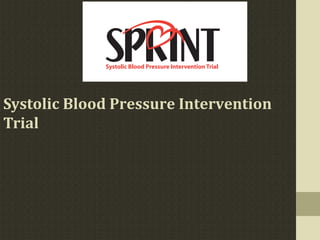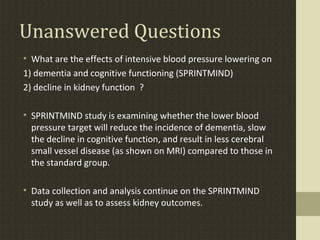The SPRINT trial tested whether treating systolic blood pressure to a lower goal of <120 mm Hg compared to <140 mm Hg would reduce cardiovascular events. Interim results found the intensive treatment reduced cardiovascular complications by 30% and mortality by 25%, leading the trial to stop early. Final results are forthcoming to determine effects on other outcomes like dementia and kidney function.


































